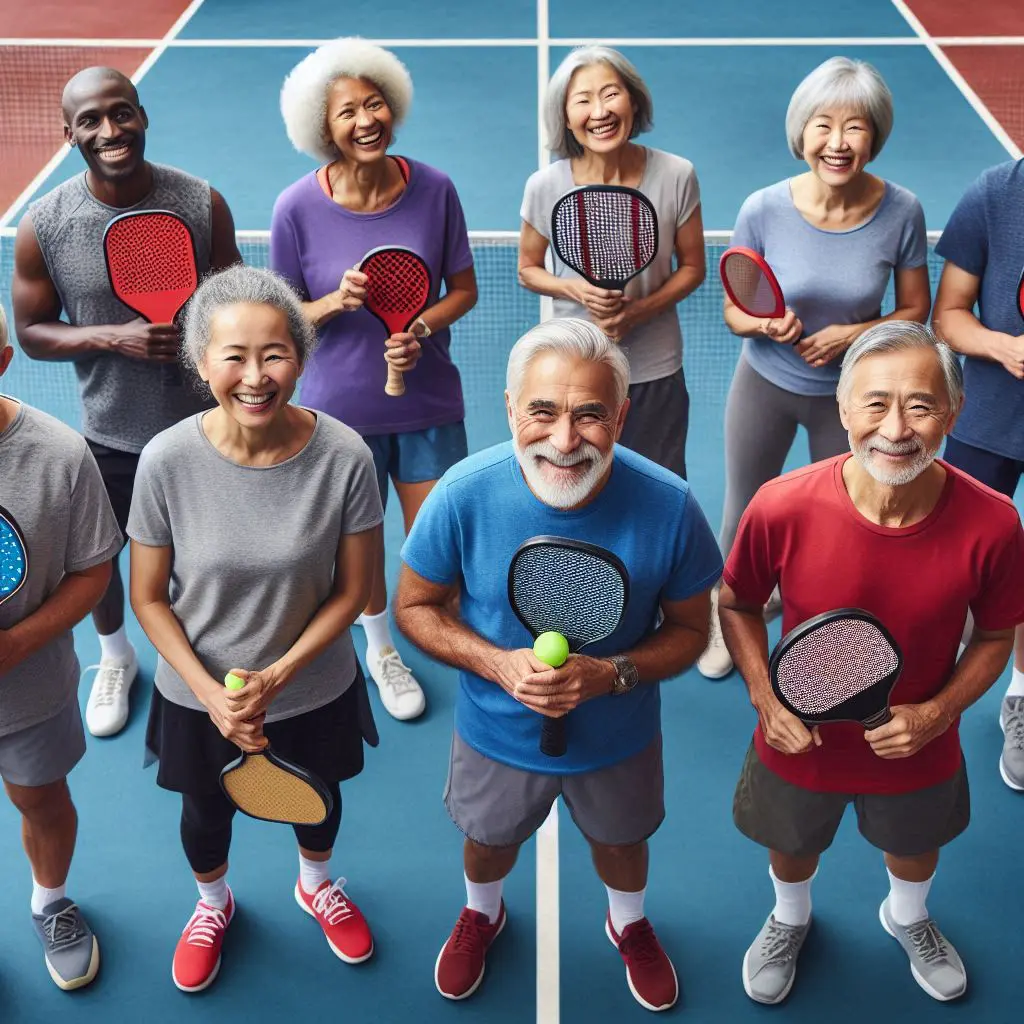Baby Boomers, those born between 1946 and 1964, have witnessed significant societal changes throughout their lives. One constant thread, however, has been the role of sports and physical activity in maintaining a healthy Lifestyle. Engaging in sports has always been more than just a hobby for many baby boomers; it has been a vital component of their well-being.

The 1950s and 1960s were formative years for baby boomers, marked by a burgeoning sports culture. From the rise of baseball and football to the introduction of fitness movements like jogging, sports became deeply ingrained in Boomer’s daily lives. School sports programs and community leagues flourished, fostering a generation that valued physical activity. Over the decades, this passion for sports has evolved but remains a cornerstone of the baby boomer lifestyle.
Regular participation in sports has been shown to significantly enhance cardiovascular health. For baby boomers, engaging in activities such as walking, cycling, and swimming helps maintain heart health, reducing the risk of heart disease and Stroke. As we age, maintaining muscle strength and flexibility becomes increasingly important. Sports that involve resistance training, like tennis, Pickleball or golf, help baby boomers stay strong and agile, reducing the risk of falls and injuries. Sports provide a fun and effective way to manage weight. Consistent physical activity helps burn calories, which is crucial for preventing obesity and related health issues such as Diabetes and hypertension.
The impact of sports on baby boomers is profound and multifaceted. From improving physical health to enhancing mental well-being and fostering social connections, sports play a vital role in the lives of our generation.
The Baby Boomer Generation grew up during a time of rapid expansion in sports culture. Post-World War II, the increased leisure time and economic Growth led to a boom in sports participation and the rise of professional sports leagues. Television brought sports into living rooms, making athletes household names and inspiring many Boomers to participate in various sports activities.
In the 1960s and 1970s, traditional sports such as baseball, basketball, and football were immensely popular. Many Baby Boomers also engaged in recreational activities like swimming, tennis, and bowling. The fitness craze of the 1980s introduced aerobics, jogging, and gym workouts, further embedding the culture of physical fitness into their lives.
As Baby Boomers aged, their participation in high-impact sports decreased, and there was a notable shift towards activities that are easier on the joints and more conducive to long-term health. Sports like golf, swimming, and walking gained popularity, while new trends such as pickleball emerged as favorites among older adults.
Engaging in sports significantly improves cardiovascular health by increasing heart rate and circulation, reducing the risk of heart disease and stroke. Activities like walking, swimming, and cycling are particularly beneficial for maintaining a healthy heart.
Sports that involve weight-bearing and resistance exercises help strengthen bones and muscles, reducing the risk of osteoporosis and sarcopenia. Tennis, pickleball, golf, and strength training are excellent for enhancing musculoskeletal health.
Regular physical activity helps maintain a healthy weight, which is crucial for preventing obesity-related conditions such as diabetes and hypertension. Sports that promote cardiovascular endurance and muscle building aid in effective weight management.
Participating in sports stimulates brain function and helps maintain cognitive health. Activities that require strategy and coordination, like tennis or pickleball, are particularly effective in keeping the mind sharp.
Physical activity is a proven Stress reliever. Sports promote the release of endorphins, which act as natural mood lifters. Engaging in regular physical activity can alleviate Anxiety and Depression, leading to improved emotional well-being.
Sports provide a sense of accomplishment and boost self-esteem. The camaraderie and social interaction that come with team sports or group activities also contribute to a positive outlook on life.
Sports foster a sense of community by bringing people together. Participating in local leagues, clubs, or group activities helps Baby Boomers stay connected with their communities.
Engaging in sports is a great way to meet new people and build lasting friendships. Whether through tennis clubs, on the pickleball court, in golf groups, or swimming classes, the social aspect of sports can lead to meaningful Relationships.
Regular participation in sports reduces social isolation, a common issue among older adults. Being part of a team or a group activity provides opportunities for interaction and support, enhancing overall quality of life.
Group activities help provide social connections for people with the same interests. Yoga classes, which improve flexibility, balance and strength, while promoting relaxation and stress reduction, are an ideal meeting place for older adults. Dance classes are not only fun but work well for cardiovascular health and coordination while creating social interaction whether it is ballroom dancing, line dancing or jazz. Tai Chi is a low impact Exercise that enhances balance, flexibility, and muscle strength, while also known for its meditative and stress-relieving features.
As baby boomers age, they may face physical limitations and a higher risk of injuries. Joint issues, arthritis, and general wear and tear can make some sports challenging.
Access to suitable sports facilities and resources can be a barrier. Not all communities have amenities that cater to the needs of older adults, limiting their opportunities to stay active.
Many Baby Boomers juggle work, family responsibilities, and other commitments, making it challenging to find time for regular sports activities.
Financial constraints can also pose a challenge. Membership fees for gyms or sports clubs and the cost of equipment can be prohibitive for some baby boomers.
The impact of sports on Baby Boomers is profound, encompassing physical health, mental well-being, and social connectivity. Staying active through sports offers numerous benefits, from improved cardiovascular health and cognitive function to enhanced social engagement and emotional well-being. Despite challenges such as physical limitations and time constraints, the availability of adaptive equipment, flexible scheduling, and community programs makes it possible for Baby Boomers to maintain an active lifestyle. As they continue to embrace sports and physical activity, baby boomers can look forward to a healthier, happier, and more connected future.
Notifications